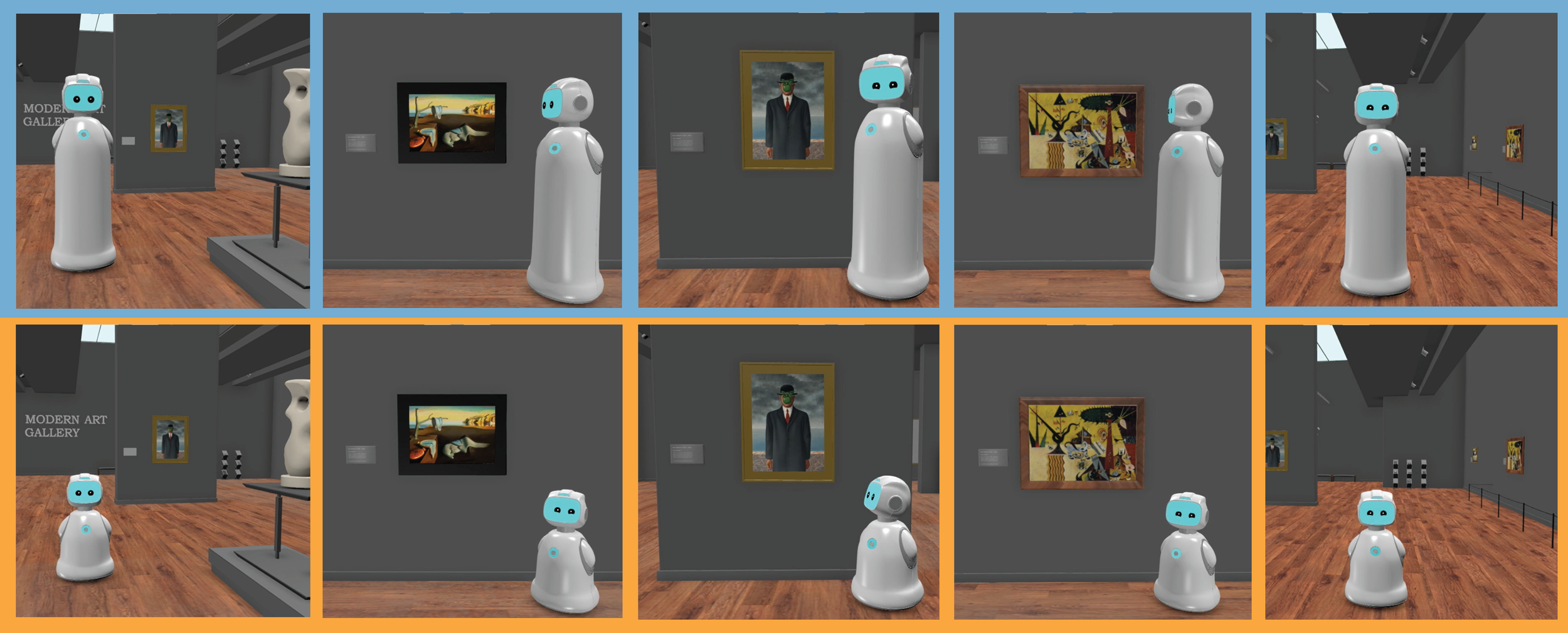Height, Voice, and Human Altruism: Designing Robot Agents for Feedback
Project Overview
As AI-driven agents become more integrated into social and service roles, the ability to solicit and learn from human feedback is critical. This project explores how fundamental design choices—specifically an agent’s height and voice pitch—impact the amount and quality of feedback it receives. Our work highlights how both design consistency and human traits, such as altruism, shape human-agent interactions.
Participants watched an animated robot agent that was either TALL (top) or SHORT (bottom) give a guided tour through an art exhibit using either a HIGH or LOW pitch voice. The robot agent ends by asking for feedback to improve future performance.
Research Approach
Our research employed a 2x2 experimental design, where participants watched an animated robot guide them through a virtual art exhibit and then provide feedback. We systematically varied the agent’s height (tall vs. short) and voice pitch (high vs. low) while controlling for other variables. To assess the impact of these factors, we measured:
The quantity and content of written feedback provided
Ratings of the agent’s service performance
Social perceptions using the Robotic Social Attribute Scale (RoSAS)
The role of participant altruism in their willingness to help
This controlled approach allowed us to isolate the effects of design elements while ensuring ecological validity in a structured, replicable virtual setting.
Iterative Design Process
Our methodology was refined through multiple pilot studies and expert feedback sessions. Early tests helped us fine-tune the robot’s script, nonverbal behaviors, and environmental context. By collaborating with museum docents, we ensured the agent’s dialogue and tour pacing felt natural. We also piloted different text-to-speech voices to balance realism and experimental control, ultimately selecting a Google Wavenet voice with pitch modifications.
Key Findings
Lower-pitched voices were rated as more knowledgeable, interactive, and helpful, reinforcing prior work on voice perception in AI.
Shorter robots were perceived as more “feeling” and “cute,” indicating size influences emotional attributions.
Altruistic participants gave less detailed feedback but were more positively inclined toward the robot, raising questions about how different personality traits affect engagement with AI.
Contrary to expectations, height-voice consistency did not significantly influence feedback quantity or agent evaluations. This suggests that while consistency is often a best practice in design, it may not always be necessary for soliciting user input.
Implications & Future Directions
Our findings suggest that robotic voice selection should be tailored to intended roles—lower-pitched voices may be better suited for authority-driven or informational roles. Additionally, human personality traits like altruism should be considered in user experience design, as they impact interaction patterns in unexpected ways. Future studies will explore how these design principles generalize to physical robots and how additional factors (e.g., facial expressiveness, gesture) shape user willingness to engage.

